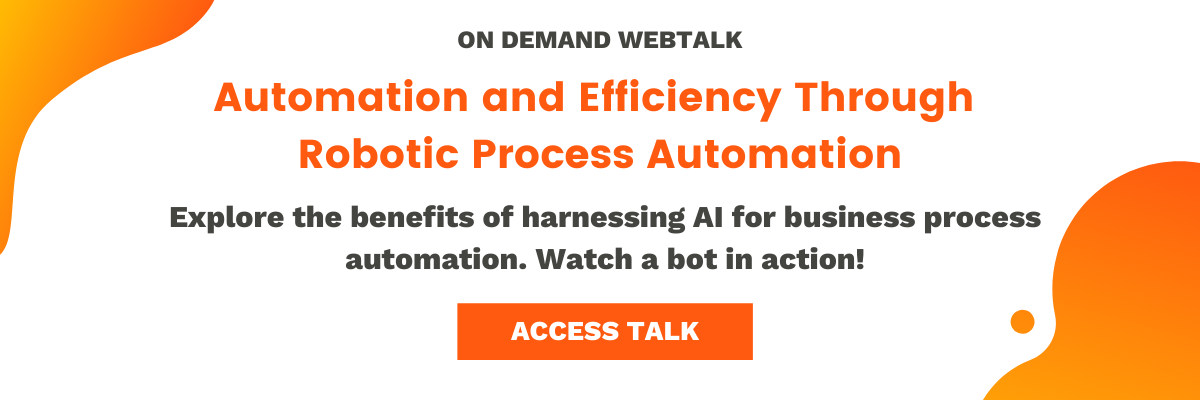How Can AI Revolutionize Quality Assurance
Switching software testing to automated algorithms has been a major trend for testers for quite a while. This level of optimization can reach an incredible height with the introduction of Artificial Intelligence. AI performs repetitive mundane work, provides reports on code quality and helps organize the process. Artificial Intelligence can also help teams to learn and cooperate, with plenty of business applications - the possibilities are limitless. Let’s take a look at how AI can transform software testing, and how companies can adopt this technology to their QA teams.
What’s the role of AI in software testing?
AI in Quality Assurance doesn’t work by itself. It can’t substitute manual work or be an all-in-one solution to previously available testing tools. Right now, the main application of AI in software testing is to improve automated testing tools. Existing automation software for QA specialists helps automate repetitive test cases, get statistics on their work, detect bugs, tech debt, and dependencies, and even make decisions. However, it has many limitations. Automated tools require a long configuration: testers and architects need to improve the tool’s functionality, show needed scenarios manually, and control its performance.
Artificial Intelligence can embrace the responsibility of configuring automated tools, overseeing their performance, and assuring correct results. It will also create detailed reports that provide a big outlook on the team’s transition from manual testing - similarly to how a person would analyze the process. So, AI can improve the speed, transparency, and time-efficiency of automated testing.
How AI can help to overcome test automation bottlenecks
Automation testing has the potential to drastically increase the efficiency of the testing team. Testers can request the system to run thousands of test cases at once, while they have to only get updated on results. This kind of QA is often so comfortable that testers are encouraged to create new test cases, increasing the workload on the system.
As a result, the system isn’t capable of delivering test runs as planned. Tests line up and eventually, a bottleneck is created. Software development and testing teams fail to get necessary insights in time and the product’s release is significantly delayed. Here’s how Artificial Intelligence can solve these overloads and optimize the efficiency of automated testing.
1. Automating writing test cases
Artificial Intelligence can improve the quality of your test cases for automated testing. Instead of running a large test suite just to detect a minor bug, AI will offer precise test cases that are fast to run and easy to control.
When developers write test cases, they often have no time to analyze additional possibilities for test cases. Instead of going for the most efficient option that will generate the least redundant data, they prepare a case that they already know how to write. For AI, analyzing project data takes a couple of seconds, which is why it’s so good at finding new approaches to test cases.
AI allows running the minimal number of tests to figure out if the code change had a positive or negative impact. No redundant data, bottlenecks, or manual involvement.
2. Automating API test generation
API evaluation allows measuring the quality of interactions between different programs that communicate with databases, servers, and use various protocols, etc. Testing assures that the connection is stable, requests are processed correctly, and an end-user will be able to get a correct output after a particular interaction.
API testing automation allows users to come up with multiple test cases for API QA and evaluate the functionality of multiple third-party tools. Some services use hundreds of APIs, in which case, automation is a must.
Artificial Intelligence analyzes the functionality of connected applications, detects potentially risky areas, and helps to create test cases. Designed to quickly analyze large data volumes, it can quickly assess if API is performing correctly, and come up with precise test cases.
3. Self-healing the execution of Selenium tests
Selenium has been one of the best-automated testing frameworks. Selenium tests, however, aren’t perfect - they are too complex, take a long time to execute, and even a small technical issue can lead to the loss of all test case progress. It’s not a flexible solution: if a requirement for automated testing wasn’t made correctly, the test case wouldn’t be complete.
Artificial Intelligence identifies such broken tests and repairs them. If the execution was stopped due to a technical issue, AI will identify it and find a solution. AI heals Selenium tests automatically and provides smart insights on improving the cases. Let’s find out more details below:
- AI heuristics define the cause of Selenium’s test failure. Once the reason is defined, the test is healed during its execution without stopping.
- Smart recommendations for optimization of unstable tests. If a feature often displays an issue, the software will evaluate its behavior and offer a smart solution, derived from collected system data.
4. Visual validation automation testing
Visual validation testing is a part of Quality Assurance where tests evaluate if the UI is displayed properly to an end-user. The goal of the test is not to make sure that the solution delivers the expected performance, but check that each UI element appears in a correct position, size, shape, color.
Automating visual testing is difficult because there are countless scenarios of possible bugs. Testers need to imagine users’ mindset and view the UI with their eyes. It’s challenging even for a human tester, much less for an automated program. This is why switching visual testing to automated solutions is connected to reductant details and specifications - testers aim to set the condition precisely, but end up with a cluttered file - which are practically impossible to execute.
AI analyzes the environment in which the application runs - hardware requirements, operating systems, browsers, and determines which UI standards are applicable. Unlike regular automated visual validation tests, AI-based scenarios adapt to users’ needs.
5. Predictive analysis
Artificial Intelligence can use existing customer and analytics data to determine how users’ needs and browsing habits will evolve. This allows testers and developers to be ahead of growing users’ standards and offer better service quality. With Machine Learning, AI platform will get better with each analyzed user behavior and provide increasingly more precise predictions.
AI tools for Automated Testing
You can start implementing Artificial Intelligence in your automated testing right now by exploring existing tools. We picked the best instruments for software testing automation, monitoring, QA monitoring and predictions, and visual testing.
Eggplant AI
The instrument uses AI to predict technical issues in the tested software, navigates thousands of features in a short period, offers smart data-driven solutions. The tool can be connected to any automation engine - it also provides graphic reports on all activities.
Appvance
The software analyzes application key features by predicting users’ behavior and performing cognitive generation. The application predicts what opportunities a user would be likely to use and ensures that the product shows the proper performance, first and foremost, on these essential features. Additional features include screen-by-screen analysis, AJAX auto capturing, and test case design.
Applitools
An AI-based visual testing automation tool. Equipped with smart vision, it can predict users’ actions on the app and outline the software’s structure. The tool compares users’ expectations to an existing interface, detects inconsistencies, and adapts to different screen sizes, and browsers.
Test.ai
The software automatically structures the functionality of the software and analyzes different screens. The ultimate purpose lies in developing the most efficient cases to assess each of the scenarios. Test. ai tracks changes of any element and determines if it was positive or negative. If some features require manual testing, AI will evaluate the situation and notify the testing team immediately.
Testsigma
If you would like to minimize human involvement in your automated testing, you can try Testsigma - a language-processing tool that evaluates the quality of test cases, so the team doesn't have to. The software will automatically identify relevant test cases, detect overload risks, and prevent bottlenecks.
Bottom line
Fortunately, there are already plenty of AI-powered platforms on the market, and using AI in testing becomes not a future trend, but a tangible reality. Artificial Intelligence opens up a lot of opportunities for automated testing optimization. Testers will not have to oversee their automated tests quite as much - the tests will self-heal and execute faster. In addition to that, Artificial Intelligence offers assistance in automating more sensitive testing areas, such as UI testing and visual validation. Moreover, AI can analyze large masses of data and create detailed test cases that will evaluate the smallest details of the system interface and functionality.
iTexico provides quality assurance and Artificial Intelligence services to assist you in leveraging these technologies to the utmost of its capabilities, while taking advantage of our Nearshore+ Model benefits: ease-of-travel and close collaboration, similar time zones, and cost-effectiveness. To learn more, drop us a line and let's explore together how you can implement AI technology in your company.
About the Author
Roman Zhidkov is CTO at DDI development company. Roman is responsible for DDI’s technology strategy and plays a key role in driving new tech initiatives within the company. He understands the context of the technology in terms of other technical areas, the customer’s needs, the business impact, and the corporate strategy.







Post Your Comment Here